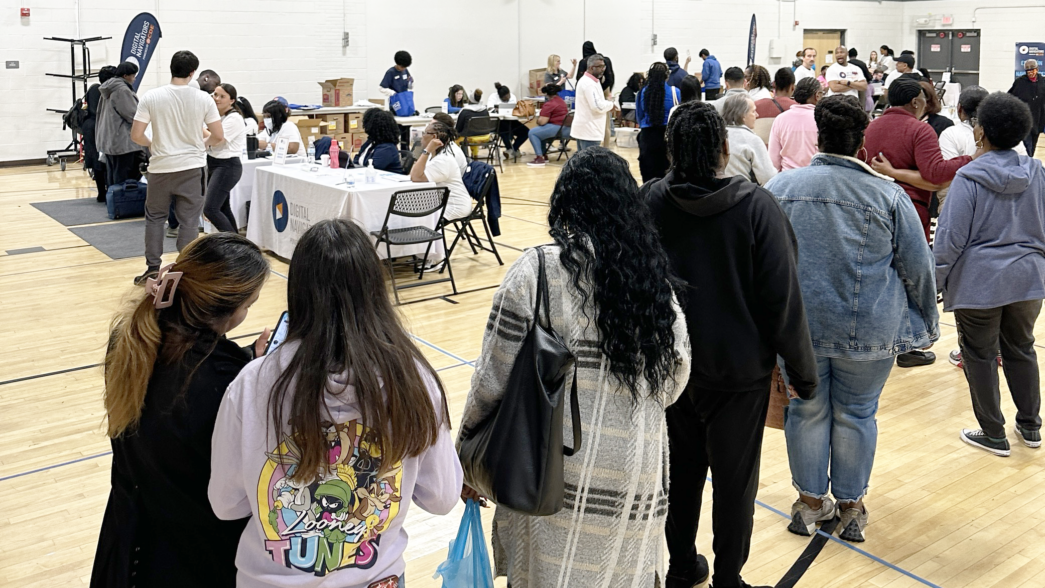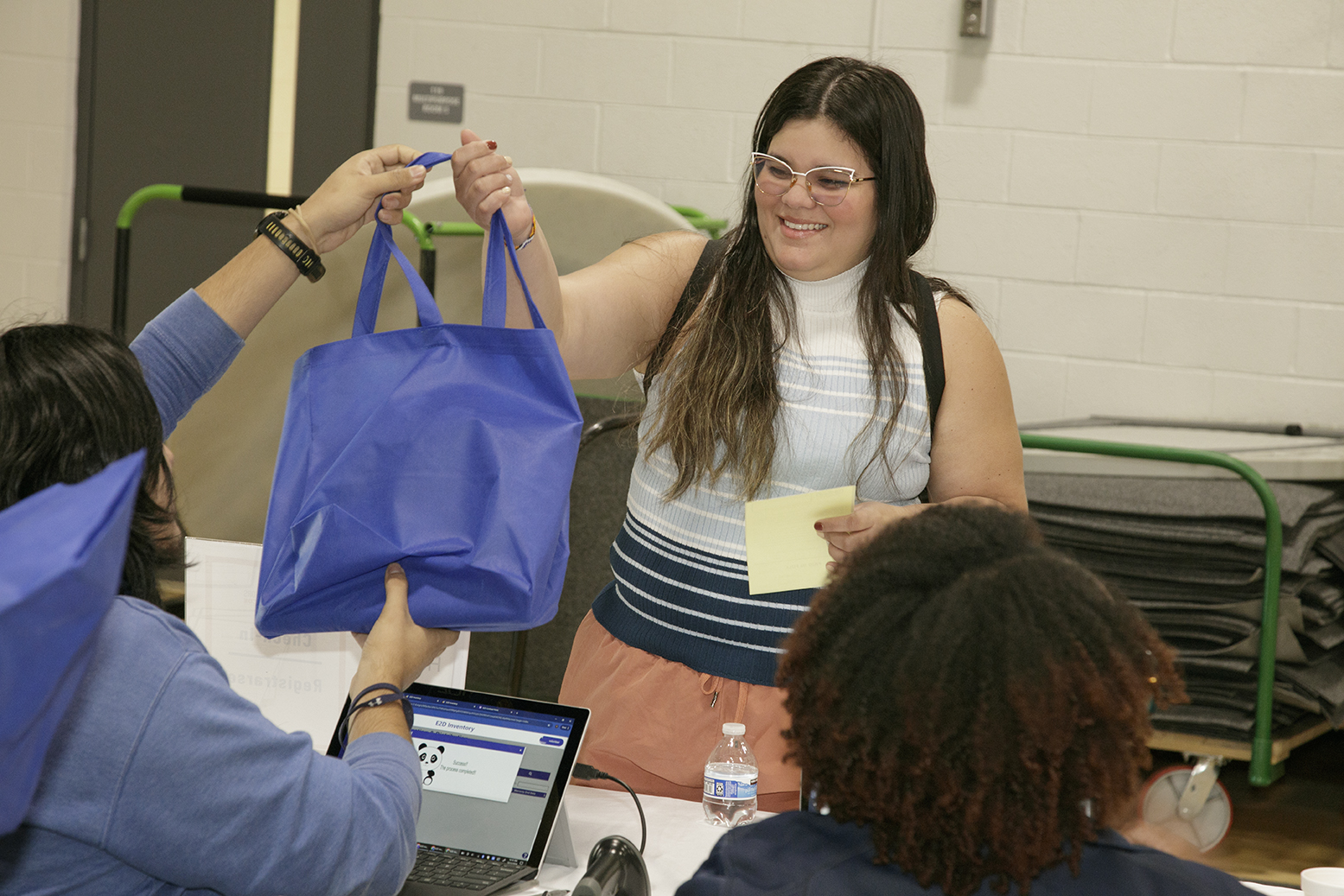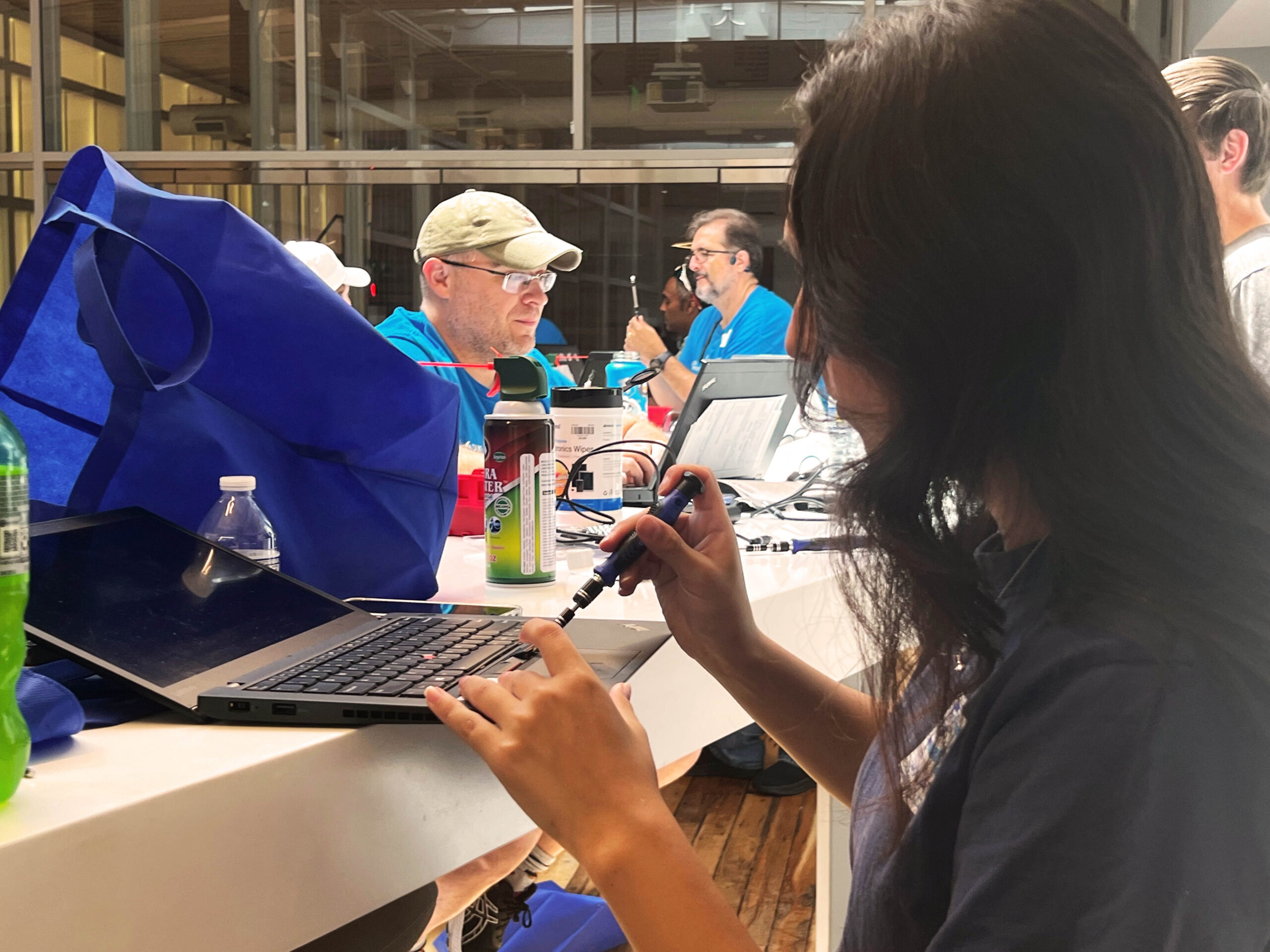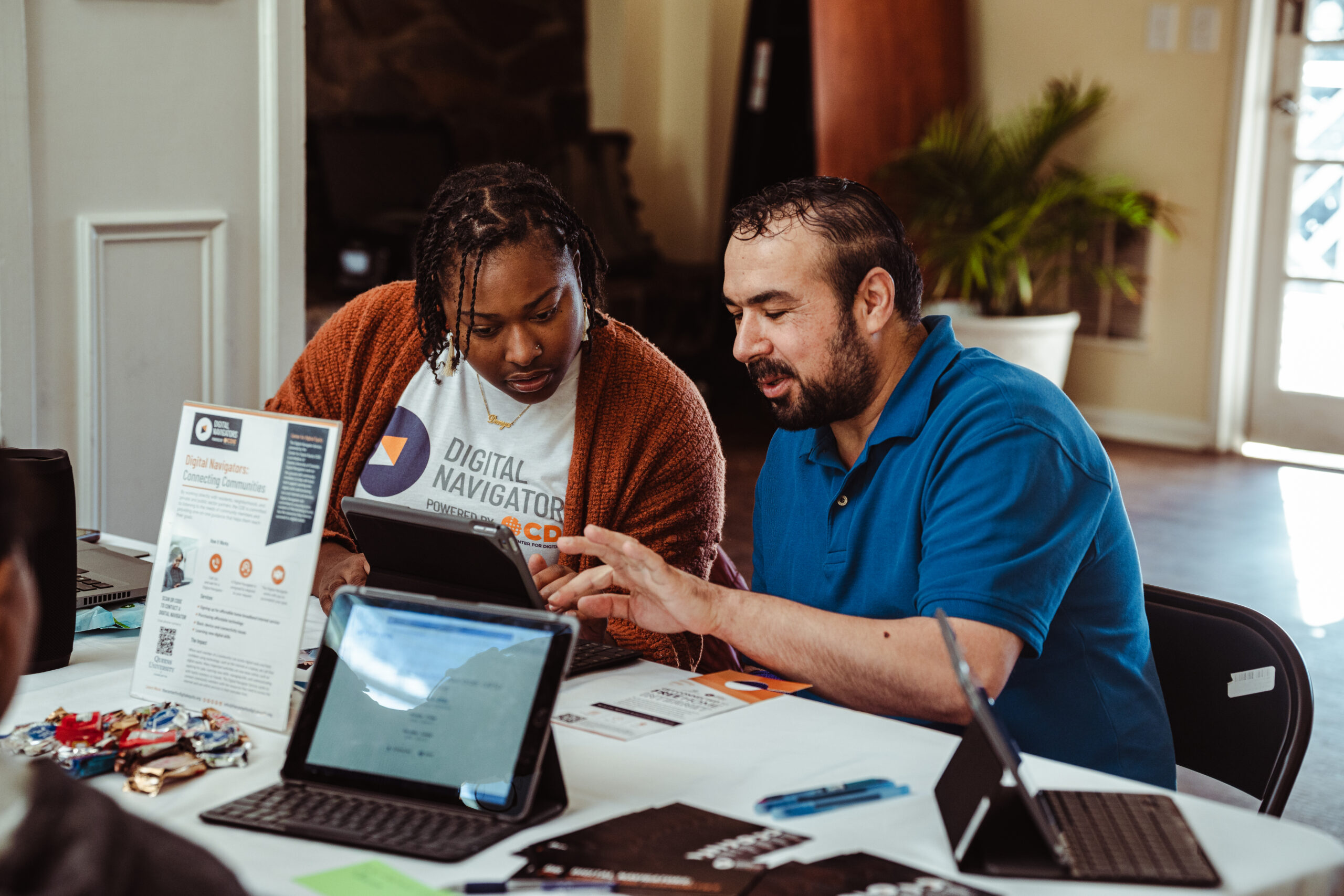Device and Connectivity OKR:
Create an on-demand supply of no-cost/low-cost devices for qualifying residents to increase the connectivity rate across Mecklenburg County.
Digital skills are nothing if the devices and connectivity are not there. This is why the CDE wants to make it easier to get appropriate devices into the hands of qualifying residents and to do so in a timely fashion—for example, to supply a resident with a device before it is needed for a digital skills class or to complete a job application.
To this end, we have made great strides toward our goal by partnering closely with other organizations, including Eliminate the Digital Divide (E2D), the City of Charlotte, and Barings. Together, these organizations and the CDE were able to distribute a sizable number of laptops.
The Numbers
Here is where things stand with regard to device distribution.
| 3 | Distributions |
| 7241 | Total Laptops |
| 5933 | Individuals |
| 1308 | Organizations |
The Organizations
Organizations that paired distribution with digital skilling (seven in total):
- Charlotte Rescue Mission
- Latin American Coalition
- Camino
- Harris YMCA
- Beatties Ford Vocational Trade Center
- Forest Hill Church Eastland
- Renaissance West Community Initiative
Two pathways. Notice here that there is a breakdown between two categories: To individuals, and to organizations.
Over the course of the year, we have had several requests that were not from individuals seeking devices, but from other community organizations looking to help distribute them. We thus saw a need for our request system to be able to capture the needs of these organizations.
This has led to a two-pronged approach for scheduling and coordination of laptop distribution, ensuring broader access for both individuals and for organizations serving our communities.
For organizations, the process includes:
- A streamlined online request form which allows organizations to specify the number of laptops needed and their intended purpose (e.g., basic computer skills training).
- A program director, along with someone from E2D, follows up with requesting organizations to assess needs and ensure alignment with program goals.
- Upon approval, the organization receives laptops and shares data on recipients. (This step is crucial, as much of the funding for this OKR is keyed to providing devices for individuals; this data makes clear which individuals received devices, and at what cost.)
For Individuals, the process looks a bit different:
- Individuals can access laptops through our Digital Navigator service. To connect with a navigator, they can submit an online form or call 311.
- Navigators discuss individual needs and eligibility for the program.
- Laptops are distributed quarterly to qualifying individuals through organized events.
This new distribution system simplifies access for both organizations and individuals, promoting digital literacy and bridging the digital divide within our community.
Qualification and process. A key part of the above processes is the ability to have some kind of qualifying or filtering mechanism to ensure that devices are truly going to those who have an identified need. In an effort to get the program off the ground, we kept things simple, creating just two basic levels of qualification. In the coming year, our team plans to take a closer look at these qualifications, assessing whether they need to be expanded (and why).
Lessons learned. One of the most important lessons learned in creating a structure and process for laptop distribution with our partner organizations was the need to address “gaps” in the distribution process.
For example: There are many individuals in the state that are homebound for one reason or another, and so cannot come out to a quarterly laptop distribution event. If they do not have someone they can send on their behalf to do the pickup, they will miss out. We are now working on a mechanism for identifying this need and making devices available to those that are homebound.
Another example has to do with timing. For instance, if a person wants to take a digital literacy class starting in a week, they have an immediate need that cannot be met in time with a quarterly distribution event. Again, if this person does not have the budget for a new laptop (which can easily run into the hundreds or thousands of dollars), they might not be able to attend class, or might be at a disadvantage if they do. We are now looking into a way to distribute “on-demand” devices for residents with an immediate need outside of the established cycle of quarterly distributions.




